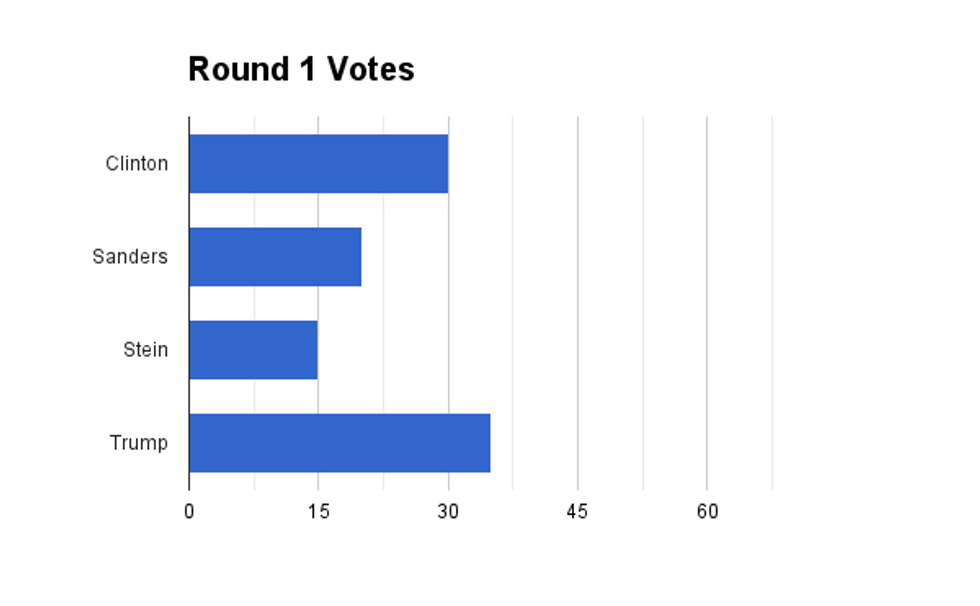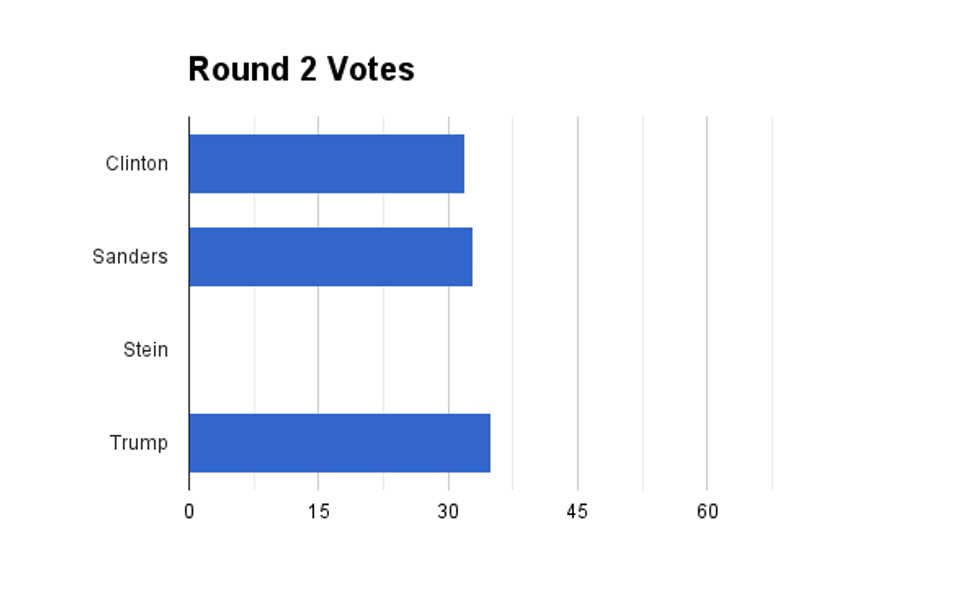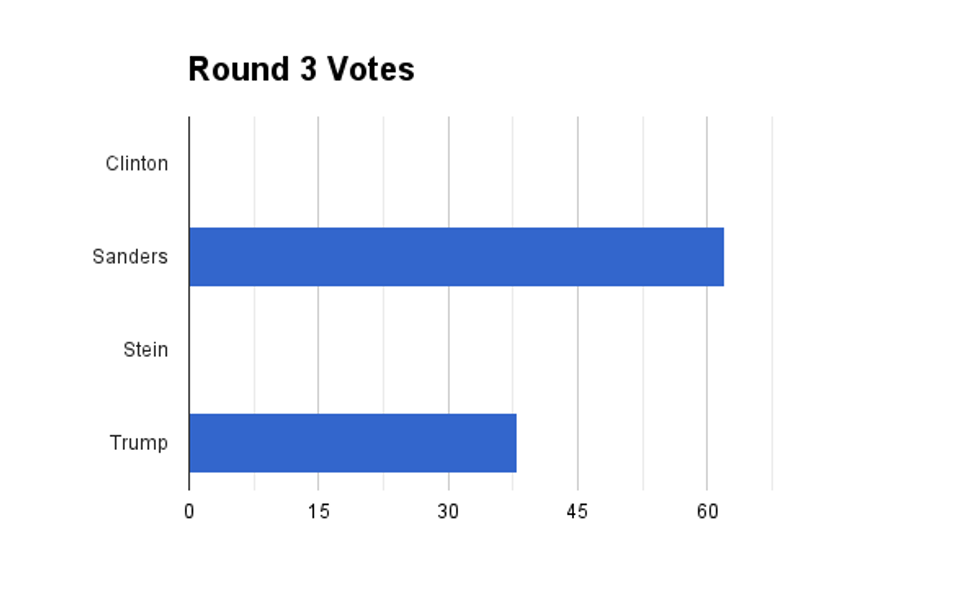The 2016 election cycle has been plagued with people who feel forced to vote against their beliefs to choose a lesser evil over a greater one. Many conservatives left their preferred candidates in the primaries to support the ones with the best chances of defeating Donald Trump. Many voters feel they have no choice but to support Hillary Clinton, even though many liberals would prefer to elect Bernie Sanders or Jill Stein, and many conservatives would prefer to back candidates who lost to Trump in the primaries.
With our current voting system, they are not wrong.
The voting system currently used in America is often called “Winner take all” or “First past the post." In such a system, the winner is just the candidate with the most votes. It sounds fair at first glance, but the reality of this election cycle shows two major downsides. First and foremost, it can split a group's vote to misrepresent citizens' preferences. Imagine, as an example, there were only 100 citizens in the country, of whom 35 want Trump to win, 30 want Clinton, 20 want to write in Sanders and 15 want Stein. Even if all the Stein and Sanders supporters would choose Clinton over Trump, the winner-take-all system means Trump wins despite only having 35 percent of the vote.
This leads to the other major problem we are seeing — winner-take-all systems almost always revert to two parties. Many supporters of third-party candidates like Gary Johnson and Jill Stein are being urged to vote for the Democratic or Republican nominee because their candidates stand virtually no chance of winning, and being told that to do otherwise is effectively wasting their votes. Thus, the two main parties remain strong, and the other parties continue to get minuscule percentages of the vote.
C.G.P. Grey, on YouTube, created a video outlining more of the problems with “first-past-the-post” voting:
There is a better way.
In an instant runoff system, also sometimes called preferential voting, voters rank candidates on their ballots from most to least desired. Thus, a voter who preferred other candidates in the Republican primaries could select 1. Marco Rubio, 2. Ted Cruz and 3. Donald Trump as their top three choices, without worrying about each candidate's probability of beating Hillary Clinton. Similarly, liberal voters who dislike Clinton and Trump, but dislike Trump more, could select 1. Bernie Sanders, 2. Jill Stein and 3. Hillary Clinton, thus ensuring they primarily support their preferred candidates without worrying about indirectly helping Trump or “throwing their votes away.”
When counting votes in an instant runoff system, the candidate with the fewest votes would be eliminated, and people who voted for that candidate would have their votes moved to their second-choice candidates. That process would be repeated until one candidate has more than 50 percent of the vote. In the above example, Jill Stein would be eliminated in the first round, but her supporters' votes would be redistributed among their second choices, likely adding to Sanders and Clinton's totals, and potentially putting Sanders ahead of Clinton or Clinton ahead of Trump — a much fairer outcome than the votes simply being thrown out.
These graphs do not necessarily represent what would actually happen, but they show how votes might hypothetically be redistributed.
An instant runoff system solves many problems with winner-take-all voting. Because voters can rank any or all candidates, voters can more easily support third-party candidates who best align with their beliefs without worry of indirectly supporting “the greater evil,“ and no votes are ever “wasted” or “thrown away.”
Once again, C.G.P. Grey created a video with more details about instant runoff voting:
In short, a runoff system means more choices for everyone.
So now what? A better system only matters if it is put into action. Instant runoff voting is already used for local elections in several cities around the U.S., including Burlington, Vt.; Minneapolis; Portland, Maine; and San Francisco, with exit polls reporting the vast majority of voters preferring the instant runoff system. Such systems have also been used at the national level in countries like Australia and the Republic of Ireland for almost a century.
This can only become a reality for U.S. presidential elections if people push for the change to happen, so I encourage you share your comments on this article, share it with people, write your own article, make your own video, contact your representatives, contact people involved in the DNC and RNC, or come up with other ways to get people talking. Because one positive fact we have learned from this election cycle is enough average citizens working together can effect great change.






















